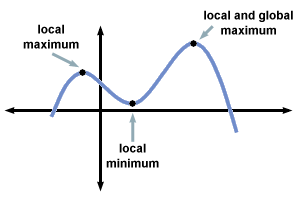Please wait while we process your payment
If you don't see it, please check your spam folder. Sometimes it can end up there.
If you don't see it, please check your spam folder. Sometimes it can end up there.
Please wait while we process your payment

By signing up you agree to our terms and privacy policy.
Don’t have an account? Subscribe now
Create Your Account
Sign up for your FREE 7-day trial
By signing up you agree to our terms and privacy policy.
Already have an account? Log in
Your Email
Choose Your Plan
Individual
Group Discount
Save over 50% with a SparkNotes PLUS Annual Plan!
 payment page
payment page
Purchasing SparkNotes PLUS for a group?
Get Annual Plans at a discount when you buy 2 or more!
Price
$24.99 $18.74 /subscription + tax
Subtotal $37.48 + tax
Save 25% on 2-49 accounts
Save 30% on 50-99 accounts
Want 100 or more? Contact us for a customized plan.
 payment page
payment page
Your Plan
Payment Details
Payment Summary
SparkNotes Plus
You'll be billed after your free trial ends.
7-Day Free Trial
Not Applicable
Renews April 7, 2025 March 31, 2025
Discounts (applied to next billing)
DUE NOW
US $0.00
SNPLUSROCKS20 | 20% Discount
This is not a valid promo code.
Discount Code (one code per order)
SparkNotes PLUS Annual Plan - Group Discount
Qty: 00
SparkNotes Plus subscription is $4.99/month or $24.99/year as selected above. The free trial period is the first 7 days of your subscription. TO CANCEL YOUR SUBSCRIPTION AND AVOID BEING CHARGED, YOU MUST CANCEL BEFORE THE END OF THE FREE TRIAL PERIOD. You may cancel your subscription on your Subscription and Billing page or contact Customer Support at custserv@bn.com. Your subscription will continue automatically once the free trial period is over. Free trial is available to new customers only.
Choose Your Plan
This site is protected by reCAPTCHA and the Google Privacy Policy and Terms of Service apply.
For the next 7 days, you'll have access to awesome PLUS stuff like AP English test prep, No Fear Shakespeare translations and audio, a note-taking tool, personalized dashboard, & much more!
You’ve successfully purchased a group discount. Your group members can use the joining link below to redeem their group membership. You'll also receive an email with the link.
Members will be prompted to log in or create an account to redeem their group membership.
Thanks for creating a SparkNotes account! Continue to start your free trial.
We're sorry, we could not create your account. SparkNotes PLUS is not available in your country. See what countries we’re in.
There was an error creating your account. Please check your payment details and try again.
Please wait while we process your payment

Your PLUS subscription has expired
Please wait while we process your payment
Please wait while we process your payment

Analysis of Graphs
Derivatives can be used to gather information about the graph of a function. Since the derivative represents the rate of change of a function, to determine when a function is increasing, we simply check where its derivative is positive. Similarly, to find when a function is decreasing, we check where its derivative is negative.
The points where the derivative is equal to 0 are called critical points. At these points, the function is instantaneously constant and its graph has horizontal tangent line. For a function representing the motion of an object, these are the points where the object is momentarily at rest.
A local minimum (resp. local maximum) of a function f is a point (x0, f (x0)) on the graph of f such that f (x0)≤f (x) (resp. f (x0)≥f (x)) for all x in some interval containing x0. Such a point is called a global minimum (resp. global maximum) of a function f if the appropriate inequality holds for all points in the domain. In particular, any global maximum (minimum) is also a local maximum (minimum).
It is intuitively clear that the tangent line to the graph of a function at a local minimum or maximum must be horizontal, so the derivative at the point is 0, and the point is a critical point. Therefore, in order to find the local minima/maxima of a function, we simply have to find all its critical points and then check each one to see whether it is a local minimum, a local maximum, or neither. If the function has a global minimum or maximum, it will be the least (resp. greatest) of the local minima (resp. maxima), or the value of the function on an endpoint of its domain (if any such points exist).

Clearly, the behavior near a local maximum is that the function increases, levels off, and begins decreasing. Therefore, a critical point is a local maximum if the derivative is positive just to the left of it, and negative just to the right. Similarly, a critical point is a local minimum if the derivative is negative just to the left and positive to the right. These criteria are collectively called the first derivative test for maxima and minima.
There may be critical points of a function that are neither local maxima or minima, where the derivative attains the value zero without crossing from positive to negative. For instance, the function f (x) = x3 has a critical point at 0 which is of this type. The derivative f'(x) = 3x2 is zero here, but everywhere else f' is positive. This function and its derivative are sketched below.
Please wait while we process your payment

